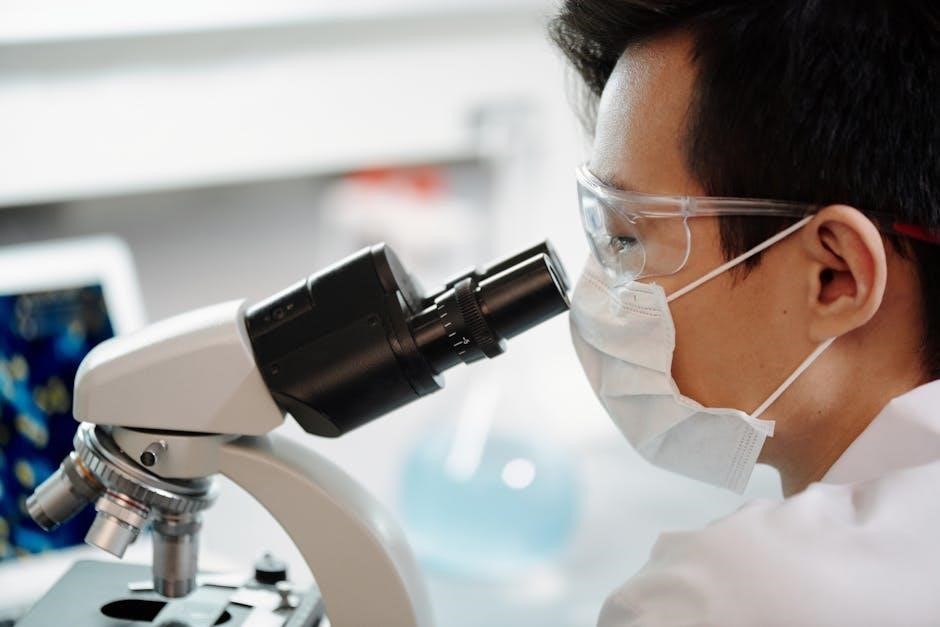carl jung shadow work pdf
Shadow work‚ rooted in Carl Jung’s psychology‚ explores the repressed aspects of the psyche‚ known as the shadow․ It involves integrating hidden thoughts‚ emotions‚ and desires to achieve self-awareness and personal growth‚ fostering compassion and emotional healing through introspection and self-reflection․
1․1․ Definition of Shadow Work
Shadow work‚ rooted in Carl Jung’s analytical psychology‚ refers to the process of exploring and integrating the repressed‚ hidden aspects of the psyche․ These aspects‚ known as the shadow‚ include undesirable traits‚ fears‚ and unresolved emotions that are often buried in the unconscious mind․ Through self-reflection‚ journaling‚ and meditation‚ individuals confront and accept these parts‚ fostering personal growth‚ emotional healing‚ and greater self-awareness․ This practice is essential for achieving psychological wholeness and understanding the unconscious mind․
1․2․ Significance of Shadow Work in Modern Psychology
Shadow work holds profound significance in modern psychology as it addresses the unconscious aspects of the human psyche․ By exploring repressed emotions and thoughts‚ individuals gain deeper self-awareness and emotional resilience․ This practice fosters compassion‚ reduces inner conflict‚ and promotes mental well-being․ It is particularly relevant in addressing issues like projection‚ trauma‚ and emotional suppression‚ offering a pathway to psychological healing and growth․ Shadow work bridges the gap between the conscious and unconscious mind‚ empowering individuals to confront and integrate their hidden selves․
Carl Jung and the Concept of the Shadow
Carl Jung developed the concept of the shadow‚ a part of the unconscious containing repressed thoughts and desires․ His work in Analytical Psychology emphasizes integrating the shadow for self-awareness and personal growth‚ fostering emotional healing and psychological balance․
2․1․ Who Was Carl Jung?
Carl Gustav Jung‚ a Swiss psychiatrist‚ founded Analytical Psychology․ His work on the collective unconscious‚ archetypes‚ and the process of individuation revolutionized modern psychology․ Jung’s concept of the shadow‚ a repressed part of the psyche‚ is central to his theories․ His ideas have deeply influenced psychotherapy‚ spirituality‚ and personal development‚ offering insights into the human psyche’s structure and the path to self-realization through integrating the unconscious with the conscious mind․
2․2․ The Shadow in Jungian Psychology
In Jungian psychology‚ the shadow represents the repressed‚ unwanted aspects of the personality‚ hidden in the unconscious mind․ It contains qualities we deny or hide‚ such as negative traits‚ desires‚ or fears․ The shadow is not inherently evil but rather a natural part of the psyche․ Ignoring it can lead to projection‚ where we attribute these traits to others․ Recognizing and integrating the shadow is crucial for self-awareness and psychological wholeness‚ as it allows individuals to confront their full humanity and achieve greater balance and harmony within․
2․3․ Jung’s Personal Experience with the Shadow
Carl Jung’s personal encounter with the shadow was deeply transformative․ He experienced intense emotional struggles and visions‚ which he documented in his journals․ Jung’s confrontation with his shadow revealed repressed fears and desires‚ leading to profound self-awareness․ This journey shaped his concept of the shadow as a universal aspect of the psyche․ His personal experiences underscored the importance of integrating the shadow for psychological wholeness‚ influencing his theories and therapeutic practices․ Jung’s vulnerability and honesty about his shadow work set a foundation for modern applications of this concept․

Key Concepts Related to the Shadow
The shadow refers to repressed aspects of the psyche‚ including undesirable traits and hidden desires․ It encompasses both personal and collective elements‚ shaped by societal norms and unconscious repression․
3․1․ The Personal Shadow
The personal shadow‚ as described by Carl Jung‚ consists of repressed thoughts‚ desires‚ and traits that individuals hide from themselves and others․ These elements are often deemed unacceptable due to societal norms‚ personal values‚ or fear of judgment․ The personal shadow can include negative qualities like anger or jealousy‚ as well as positive attributes that are not acknowledged․ Unaddressed‚ it can lead to emotional turmoil or projection onto others․ Integrating the personal shadow through self-reflection and awareness is crucial for psychological balance and mental well-being․ Shadow work helps individuals confront and accept these hidden aspects․
3․2․ The Collective Shadow
The collective shadow refers to a shared reservoir of repressed archetypes common to all humans‚ shaped by cultural‚ societal‚ and universal experiences․ It contains elements like fear‚ greed‚ and aggression‚ which are universally rejected․ Unlike the personal shadow‚ the collective shadow is inherited and manifests similarly across individuals and groups․ It often appears in societal conflicts‚ prejudices‚ and collective guilt․ Addressing the collective shadow fosters empathy and understanding‚ allowing individuals to confront shared human frailties and work toward healing and unity on a broader scale․
3․3․ Repression and the Unconscious Mind
Repression‚ a key concept in Jungian psychology‚ involves pushing unwanted thoughts‚ desires‚ and feelings into the unconscious mind‚ where they form the shadow․ This mechanism hides aspects of ourselves deemed unacceptable‚ creating a divide between our conscious identity and repressed traits․ The unconscious mind stores these suppressed elements‚ often leading to emotional suppression and inner conflict․ Shadow work aims to confront and integrate these repressed aspects‚ fostering self-awareness and healing by bridging the gap between the conscious and unconscious‚ as outlined in Carl Jung’s theories on the psyche․ This process is vital for psychological wholeness and growth․

The Significance of Shadow Work
Shadow work is crucial for integrating repressed traits‚ enhancing self-awareness‚ and fostering compassion․ It promotes emotional healing and psychological wholeness by confronting and accepting our hidden aspects․
4․1․ Integration of the Shadow for Personal Growth
Integrating the shadow fosters personal growth by expanding self-awareness and embracing repressed emotions․ This process allows individuals to confront hidden aspects‚ fostering compassion and wholeness․ By acknowledging and accepting these traits‚ the ego becomes more flexible‚ enabling greater emotional resilience and authenticity․ Shadow integration is essential for psychological healing and maturity‚ as it bridges the conscious and unconscious mind‚ promoting a balanced and harmonious self․
4․2․ The Role of Self-Awareness in Shadow Work
Self-awareness is a cornerstone of shadow work‚ enabling individuals to recognize and confront repressed emotions‚ thoughts‚ and desires․ It involves introspection and honesty about one’s true nature‚ fostering a deeper understanding of the unconscious mind․ Through self-awareness‚ individuals can identify hidden patterns and traits‚ allowing them to address and integrate their shadow․ This awareness is foundational for shadow work‚ as it provides the insight needed to acknowledge and transform the unconscious elements that shape behavior and decision-making․
4․3․ Connection to the Collective Unconscious
The collective unconscious‚ a concept introduced by Carl Jung‚ contains universal archetypes shared across humanity․ The shadow‚ as part of this collective unconscious‚ represents repressed thoughts and feelings common to all individuals․ Shadow work connects personal repression to these universal symbols‚ allowing individuals to understand their shadow within a broader human context․ By engaging with the collective unconscious‚ shadow work fosters a deeper understanding of shared human experiences‚ promoting personal growth and collective harmony through the integration of repressed elements․

Methods and Techniques for Shadow Work
Shadow work employs various techniques like journaling‚ meditation‚ and dream analysis to explore the unconscious․ Rituals and symbolic acts also aid in integrating repressed emotions‚ fostering self-awareness and healing through intentional reflection and processing of hidden aspects of the psyche․
5․1․ Journaling and Self-Reflection
Journaling and self-reflection are cornerstone practices in shadow work‚ enabling individuals to confront and process repressed emotions and thoughts․ By documenting inner experiences‚ one can identify patterns and hidden fears‚ fostering deeper self-awareness․ This method encourages honest exploration of the unconscious‚ aligning with Jung’s concept of the shadow․ Regular journaling helps integrate fragmented parts of the psyche‚ promoting emotional healing and wholeness․ It serves as a safe space to examine uncomfortable truths‚ ultimately facilitating personal growth and acceptance of one’s full self․
5․2․ Meditation and Mindfulness Practices
Meditation and mindfulness are powerful tools for shadow work‚ helping individuals access the unconscious mind․ These practices cultivate awareness of repressed thoughts and emotions‚ allowing for their acknowledgment and integration․ By quieting the mind‚ one can observe shadow elements without judgment‚ fostering compassion and understanding․ Regular mindfulness practice supports the process of individuation‚ aligning with Jung’s vision of psychological wholeness․ It provides a calm and centered approach to confronting the shadow‚ leading to greater self-acceptance and emotional balance in daily life․
5․3․ Dream Analysis
Dream analysis is a key tool in shadow work‚ as it reveals the unconscious mind’s hidden contents․ Carl Jung emphasized that dreams often symbolize repressed thoughts and desires‚ offering insights into the shadow․ By examining dream imagery‚ individuals can identify shadow elements‚ such as unresolved fears or unacknowledged desires․ This process involves interpreting symbols‚ emotions‚ and themes‚ allowing for a deeper understanding of the unconscious․ Regular dream analysis fosters self-awareness and aids in integrating the shadow‚ promoting psychological wholeness and personal growth‚ as outlined in Jung’s shadow work principles․
5․4․ Rituals and Symbolic Acts
Rituals and symbolic acts are powerful tools in shadow work‚ offering a structured way to engage with the unconscious․ These practices‚ such as ceremonies or symbolic gestures‚ help individuals confront and integrate their shadow․ Rituals create a safe space for processing repressed emotions and unresolved experiences‚ allowing for emotional release and transformation․ By performing these acts‚ individuals can symbolically acknowledge and reclaim their shadow‚ fostering healing and self-awareness․ Rituals complement other shadow work methods‚ such as journaling and meditation‚ enhancing the journey of personal growth and integration․

Benefits of Engaging in Shadow Work
Engaging in shadow work fosters self-acceptance‚ compassion‚ and emotional healing․ It reduces internal conflict‚ enhances mental health‚ and promotes personal growth by integrating repressed aspects of the psyche․
6․1․ Enhanced Self-Acceptance
Shadow work leads to enhanced self-acceptance by helping individuals acknowledge and embrace their repressed thoughts‚ emotions‚ and desires․ This process reduces self-judgment and fosters a more compassionate relationship with oneself‚ allowing for greater emotional balance and authenticity․ By confronting the shadow‚ people gain a more holistic understanding of their psyche‚ which promotes self-love and acceptance of their full humanity‚ including both strengths and weaknesses․
6․2․ Development of Compassion and Empathy
Engaging in shadow work cultivates compassion and empathy by fostering a deeper understanding of human imperfections and struggles․ Recognizing and accepting one’s own repressed emotions and flaws encourages a more tolerant and non-judgmental attitude toward others․ This process helps individuals connect with others on a deeper level‚ fostering empathy and reducing feelings of isolation․ By integrating the shadow‚ people develop a more compassionate perspective‚ embracing both their own humanity and that of others‚ which enriches interpersonal relationships and personal growth․
6․3․ Improved Mental Health
Shadow work promotes mental well-being by addressing repressed emotions and unresolved trauma‚ reducing internal conflict and emotional suppression․ By confronting and integrating the shadow‚ individuals often experience a decrease in anxiety‚ depression‚ and self-criticism․ This process fosters authenticity and self-compassion‚ leading to improved mental health and emotional resilience․ It encourages a balanced psyche‚ where previously hidden aspects are acknowledged and harmonized‚ resulting in greater inner peace and stability․

The Risks of Ignoring the Shadow
Ignoring the shadow can lead to unresolved trauma‚ emotional suppression‚ and projection of repressed qualities onto others‚ causing internal conflict and hindering psychological growth and well-being․
7․1․ Projection of the Shadow onto Others
Projection of the shadow onto others occurs when repressed thoughts‚ emotions‚ or desires are attributed to someone else‚ often leading to misunderstandings and conflict․ This psychological mechanism prevents individuals from confronting their own darker aspects‚ hindering shadow integration․ By externalizing what is unacceptable within‚ people avoid self-reflection‚ perpetuating emotional turmoil and unconscious patterns․ This projection not only strains relationships but also blocks personal growth‚ as the shadow remains unaddressed‚ contributing to unresolved trauma and emotional suppression․
7․2․ Spiritual Bypassing
Spiritual bypassing occurs when individuals use spiritual practices to avoid confronting their shadow‚ rather than integrating it․ This escapism prevents true self-awareness and healing‚ as the shadow remains unaddressed․ By focusing solely on positivity or higher states of consciousness‚ people bypass the necessary work of acknowledging and processing their darker emotions and traits․ This can lead to emotional suppression‚ unresolved trauma‚ and a lack of authentic personal growth‚ ultimately hindering the individuation process and shadow integration․
7․3․ Unresolved Trauma and Emotional Suppression
Unresolved trauma and emotional suppression are deeply intertwined with the shadow‚ as they often lead to the repression of painful experiences and feelings․ When individuals avoid confronting these wounds‚ they become embedded in the unconscious‚ contributing to the shadow’s power․ This suppression can manifest as emotional numbness‚ self-sabotage‚ or unexplained fears․ Jung emphasized that ignoring these aspects hinders personal growth and individuation‚ as the shadow remains unaddressed․ Addressing trauma through shadow work is essential for healing and achieving psychological wholeness‚ allowing individuals to reclaim and integrate their suppressed emotions and experiences․

Resources for Shadow Work
Explore the “Carl Jung Shadow Work PDF” for foundational insights․ Workbooks‚ books‚ and online communities offer practical tools and guidance for deepening your shadow work journey․
8․1․ The “Carl Jung Shadow Work PDF”
The “Carl Jung Shadow Work PDF” is a valuable resource for understanding and exploring the concept of the shadow․ This document delves into Jung’s theories‚ offering insights into the unconscious mind and the process of shadow integration․ It includes exercises‚ tips‚ and techniques to guide individuals through their inner work․ The PDF also provides case studies and examples of shadow integration‚ making it a comprehensive tool for those seeking to deepen their understanding of Jungian psychology and apply it to their personal growth journey․ It is widely available for download in various formats‚ making it accessible to anyone interested in this profound psychological framework․
8․2․ Recommended Books and Articles
Several books and articles complement the “Carl Jung Shadow Work PDF‚” offering deeper insights into shadow integration․ Titles like “The Shadow Workbook” by Rowena Mahmoud explore practical exercises and real-life applications․ Articles from communities such as r/ShadowWork provide modern perspectives and community-driven discussions․ These resources enrich understanding and application of Jungian principles‚ aiding individuals in their journey of self-discovery and psychological growth through shadow work practices and introspective exercises․
8․3․ Online Communities and Forums
Online communities and forums dedicated to shadow work provide valuable spaces for discussion and support․ Platforms like r/ShadowWork on Reddit offer insights‚ shared experiences‚ and resources for individuals exploring Carl Jung’s concepts․ These forums allow users to ask questions‚ share personal journeys‚ and learn from others engaged in shadow integration․ They also serve as hubs for discovering new materials‚ including PDF guides and articles‚ fostering a sense of community and mutual growth in the exploration of the shadow․

Modern Applications of Shadow Work
Shadow work is now applied in therapy‚ spirituality‚ and personal development‚ helping individuals confront repressed emotions and achieve self-awareness‚ fostering emotional healing and growth in modern contexts․
9․1․ Shadow Work in Therapy
Shadow work in therapy involves guiding clients to confront and integrate their repressed emotions and desires․ By addressing the shadow‚ therapists help individuals reduce self-judgment and unresolved trauma‚ fostering emotional healing and self-acceptance․ This process often includes journaling‚ meditation‚ and dream analysis‚ encouraging clients to explore their unconscious mind․ The goal is to expand self-awareness‚ enabling individuals to lead more authentic and balanced lives by acknowledging their hidden aspects․
9․2․ Shadow Work in Spiritual Practices
Shadow work in spiritual practices enhances self-awareness and inner healing by addressing repressed emotions and desires․ It aligns with Jung’s concept of integrating the unconscious‚ fostering a deeper connection to the divine․ Techniques like meditation‚ journaling‚ and ritual help individuals confront their shadow‚ promoting authenticity and spiritual growth․ By embracing both light and dark aspects‚ practitioners achieve wholeness‚ transcending duality and experiencing profound inner peace․ This integration is essential for a balanced and meaningful spiritual journey․
9․3․ Shadow Work in Personal Development
Shadow work in personal development involves confronting and integrating repressed thoughts‚ emotions‚ and desires to foster self-awareness and growth․ By acknowledging the shadow‚ individuals can break free from self-sabotage and unhealthy patterns‚ embracing authenticity․ Techniques like journaling and meditation help uncover hidden aspects‚ leading to emotional resilience and compassion․ This process‚ inspired by Jung’s concepts‚ empowers individuals to embrace their wholeness‚ enhancing self-acceptance and personal fulfillment; Shadow work becomes a transformative tool for achieving a balanced and authentic life․

Case Studies and Examples
Jung’s personal journey with the shadow serves as a compelling case study․ Modern examples include individuals integrating repressed emotions‚ fostering self-awareness and emotional healing through shadow work practices․
10․1․ Jung’s Case Studies on the Shadow
Carl Jung’s case studies on the shadow highlight his personal journey and observations․ He explored how repressed thoughts and emotions form the shadow‚ often manifesting in dreams or projections․ Jung’s work revealed that neglecting the shadow can lead to emotional turmoil and societal issues․ His insights emphasize integrating the shadow for psychological wholeness‚ illustrating its role in individuation and self-awareness‚ as detailed in his writings and case analyses․
10․2․ Modern Examples of Shadow Integration
Modern examples of shadow integration include individuals using journaling‚ meditation‚ and therapy to confront repressed emotions․ Online communities and workshops now facilitate shadow work‚ offering structured exercises and discussions․ Some engage in ritualistic practices or creative expression to process hidden aspects of their psyche․ These contemporary approaches‚ inspired by Jung’s concepts‚ demonstrate how shadow integration remains relevant‚ helping individuals achieve emotional balance and self-awareness in today’s fast-paced world;
Shadow work‚ inspired by Carl Jung‚ offers profound insights into the unconscious‚ fostering personal growth and emotional healing․ By integrating repressed aspects‚ individuals achieve self-awareness and compassion․
11․1․ Summary of Key Points
Carl Jung’s concept of the shadow highlights the repressed aspects of the psyche‚ essential for personal growth and self-awareness․ Shadow work involves integrating these hidden elements through journaling‚ meditation‚ and self-reflection․ It fosters compassion‚ emotional healing‚ and a balanced psyche․ By confronting the shadow‚ individuals can overcome repression‚ reduce projections‚ and achieve wholeness․ This process is vital for mental health and spiritual development‚ encouraging individuals to embrace their entirety‚ leading to a more authentic and fulfilling life․
11․2․ Encouragement to Begin Shadow Work
Embracing shadow work is a transformative journey toward self-discovery and healing․ By confronting repressed emotions and desires‚ you foster personal growth and self-acceptance․ Start with journaling‚ meditation‚ or reflection to explore your shadow․ Remember‚ this is a journey‚ not a destination․ Small steps can lead to profound insights and emotional freedom․ Be patient and compassionate with yourself as you uncover hidden truths․ The rewards of shadow work—greater empathy‚ mental clarity‚ and inner peace—make the effort worthwhile․ Begin now and take the first step toward wholeness․

Further Reading and Resources
Explore Carl Jung’s shadow work through PDFs‚ workbooks‚ and online resources․ These materials offer practical tools‚ insights‚ and techniques to deepen your understanding and practice of shadow integration․
12․1․ Finding the “Carl Jung Shadow Work PDF”
The “Carl Jung Shadow Work PDF” can be found through various online sources‚ including academic websites‚ psychological resources‚ and communities dedicated to Jungian studies․ These PDFs often include workbooks‚ exercises‚ and detailed explanations of shadow work concepts․ They provide practical tools for exploring the unconscious mind‚ offering techniques like journaling‚ meditation‚ and dream analysis․ Utilizing these resources can deepen your understanding of Jung’s theories and guide you in applying shadow work to your personal growth journey․ They are invaluable for both beginners and advanced practitioners seeking structured guidance․
12;2․ Additional Materials for Deepening Understanding
Beyond the “Carl Jung Shadow Work PDF‚” additional materials include books‚ articles‚ and online courses that delve into Jungian psychology․ These resources offer practical exercises‚ case studies‚ and expert commentary to enhance your understanding․ Many provide guided meditations‚ journaling prompts‚ and dream analysis techniques‚ allowing for a deeper exploration of the shadow․ Websites and forums dedicated to Jungian studies also offer community support and shared insights‚ making them invaluable for those seeking to integrate shadow work into their personal growth journey․ These materials complement the PDF‚ offering a well-rounded approach to shadow integration․













































